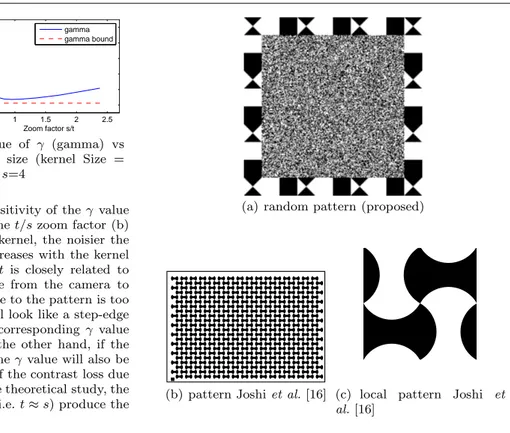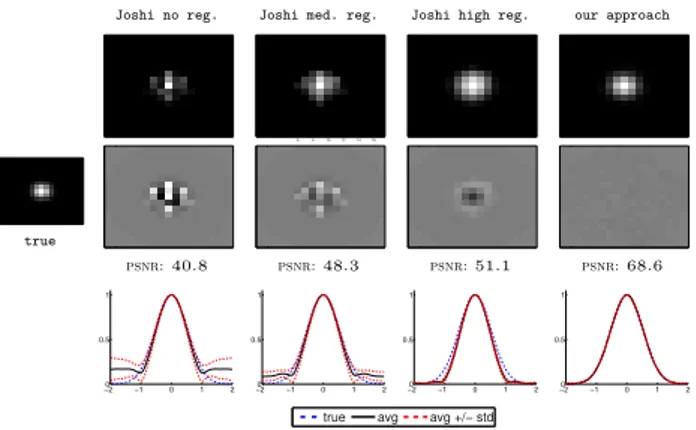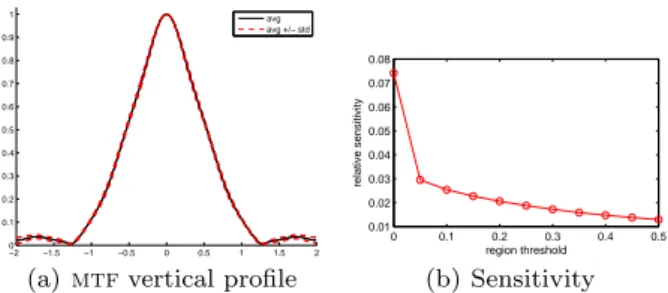The non-parametric sub-pixel local point spread function estimation is a well posed problem
Texte intégral
Figure




Documents relatifs
Our asymptotic tests perform better than all competitors besides Wolf: in the latter case, we have greater Type II error for one neural dataset, lower Type II error on the Health
kernel estimate based on Epanechnikov kernel and m)n-1/5) is asymptotically minimax in F against the class of kernel estimates fn with deterministic bandwidths,
In Section 3 it is shown that the problem of estimating parameter θ in (1) can be reduced to that of estimating the mean in a conditionally Gaussian distribution with a
To summarize, our contribution is threefold: (i) a new model of multiclass prediction based on the idea of KPMs where the regularization parameter is a global dimension parameter,
In a heuristic way, the shape of the deformation formula can be explained by the Wiener representation of the heat kernel and Wick’s theorem (see [Ha4, Appendix]).. In this section,
For a given reproducing kernel Hilbert space (RKHS), by solving the pre- image problem one seeks a pattern whose image in the RKHS is approximately a given feature..
The structural expectation is obviously not the function f , but the function f composed with the inverse φ − 1 of the expectation of H. Thus, it can be understood as the mean
Table 1 – MISE of the kernel estimators with bandwidth selected by the Goldenshluger and Lepski method (GL), and with bandwidth selected by cross-validation (CV) of the




